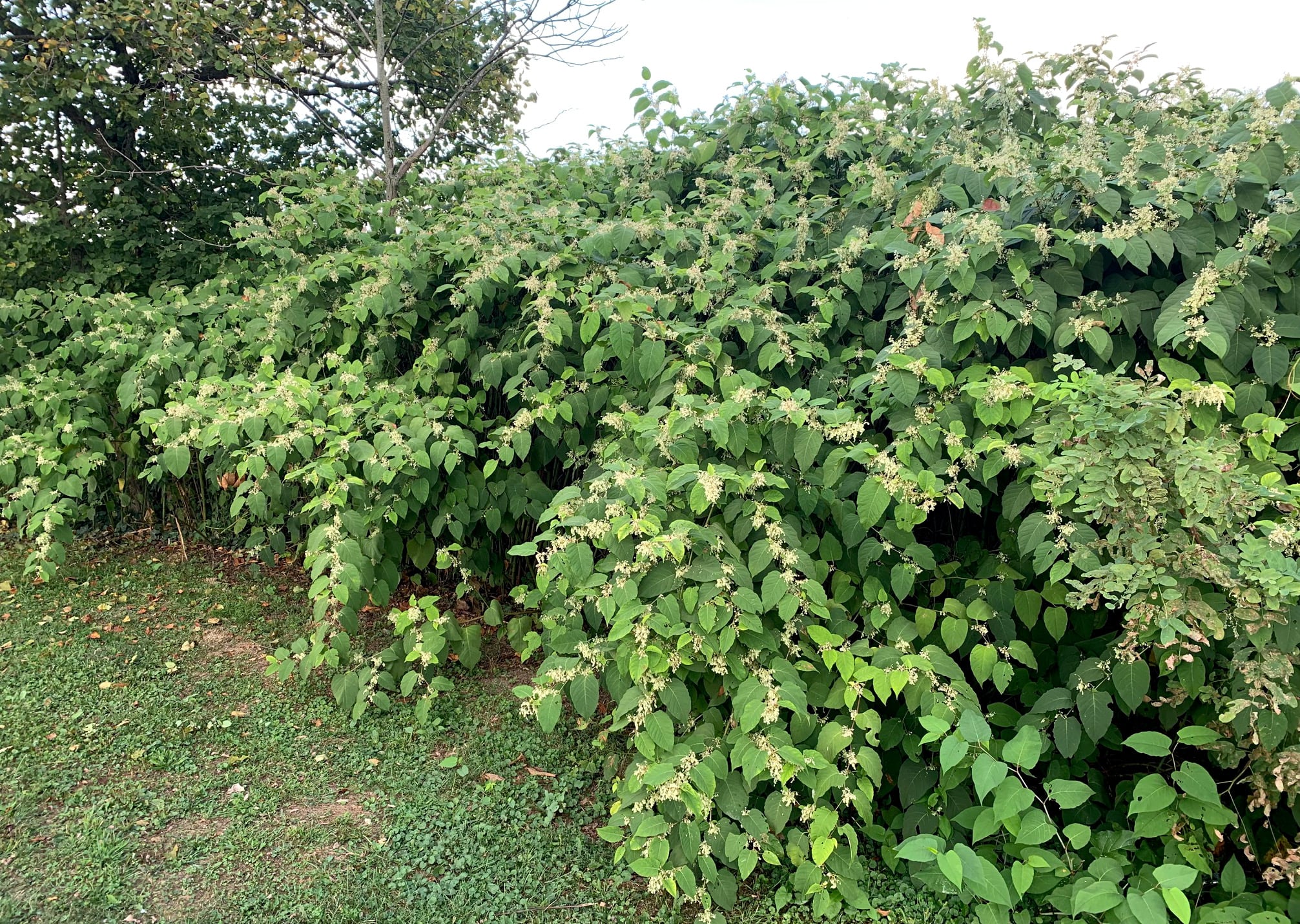Some weeds are on the mild end of the garden-ruining spectrum, coming out easily and giving up fairly easily.
But others are some of nature’s toughest competitors, able to mount tall buildings and grow faster than a speeding bullet.
These are the kudzus, Japanese knotweeds, bindweeds, thistles, and mile-a-minute weeds that can quickly dominate acreage if you turn your back for too long.
Weeds such as these have top-notch survival skills that make them particularly hard to head off and eradicate. Among their abilities:
Super seeding
Some weeds produce tens of thousands of viable seeds per plant per year and then store them for years (or decades) just below the soil surface. Examples: hairy bittercress, groundsel, chickweed, pigweed, garlic mustard, crabgrass, spotted and prostrate spurge, lambs quarters, purslane, Pennsylvania smartweed, and hairy galinsoga.
If that’s not bad enough, some come with adaptations that help them disperse their seeds far and wide, often due to “fluffy” seedheads that float on the wind. Dandelions, thistle, and horseweed are three examples of that.
Not-so-picky growing habits
Tough weeds will grow in a wide variety of adverse conditions, including poor soil that discourages lesser plants.
That’s why you’ll see weeds such as chicory, ground ivy, prickly lettuce, prostrate spurge, birdsfoot trefoil, and dandelions growing along windy roadsides, in compacted clay, gravelly alleys, and other harsh sites.
Competitive skills
The toughest weeds have the endurance to outgrow the competition, to quickly regenerate an area that a gardener has cleared, or to regrow when the top growth has been cut or sprayed.
Some have vigorous roots and runners (think bindweed, thistle, and goutweed), some grow super-fast (kudzu, mile-a-minute weed, poison ivy, etc.), and some keep coming back after you think you’ve eliminated it (thistle, bindweed, yellow nutsedge, etc.).
Still others defend their territory by giving off plant-stunting chemicals (“allelopathy”), by growing sharp thorns and prickles, and/or by producing toxic compounds when eaten or touched.
So how can mere mortal gardeners win the battle against the toughest of weeds? These are your five fight-back options:
1.) Physical assault
It’s possible to eliminate any weed if you’re persistent enough in cutting and digging.
No weed has become resistant yet to being completely dug out of the ground – roots and all. To combat weeds that regrow from even small root bits left behind, police regularly and remove all regrowers ASAP. Eventually, you’ll get them all.
Even cutting or weed-whacking weeds (and their regrowth) repeatedly can win the day. Those weed roots need energy from the sun via leaves, so if you deny that, the energy bank eventually goes broke, and the plant gives up.
For those prickly and rash-causing weeds, wear gloves and protective clothing, avoid weed-whacking (which can spew the rash-causing oils into eyes and onto unprotected skin), and be aware that those oils are active even when the plants are dormant or recently killed.
2.) Herbicides
A variety of broadleaf weed-killers are available that target most every weed, including selectively killing most lawn weeds without harming grass.
Non-selective herbicides kill most anything green, including ones such as glyphosate that travel down through foliage and into the roots, killing the whole plant.
Read labels carefully to make sure you’re using the right product for the job and using it in the correct dose, the correct way, and at the correct time.
Many of the toughest weeds need two or three applications before they’re eradicated.
3.) Smothering
Weeds can be snuffed out by
covering them with weed fabric, black plastic, or a thick layer of mulch to deny light
.
This is most useful in areas that are completely covered with weeds, where you can blanket the entire space without harming desirable plants.
Leave the cover in place for at least several months. A whole year is even better. You might need to weed-whack taller weeds first before covering.
4.) Stop the seeding
To quell rampant-seeding weeds, never let a weed produce mature seed. Cut it or remove it before flowering to keep seeds from dropping and adding to the seed bank.
Step two is disturbing the soil as little as possible. Tilling, digging, and cultivating stir dormant weed seeds to the soil surface, encouraging them to sprout in the warmth and light.
Step three is discouraging seeds from germinating. A two- to three-inch layer of mulch over all bare soil is one good way to do that, and another is applying granular weed preventers.
5.) Claim your space
There’s a gardening truism that “if you have too many weeds, you don’t have enough plants.”
One purpose of weeds is that it’s nature way of covering bare soil to prevent it from eroding. If you can
plant all open soil with well-chosen plants
that densely cover the space, you’ll get that job done with plantings that suit you better.
Never let soil open and bare, or some weed will quickly fill it.
Gardening with George Weigel
-
No, the ants aren’t killing your trees
-
Need privacy in the yard? Meet the ‘baby brother’ of Green Giant: George’s Plant Pick of the Week
-
Here’s when to get ruthless with your perennial flowers
-
You can weed your garden without bending over, here’s how






